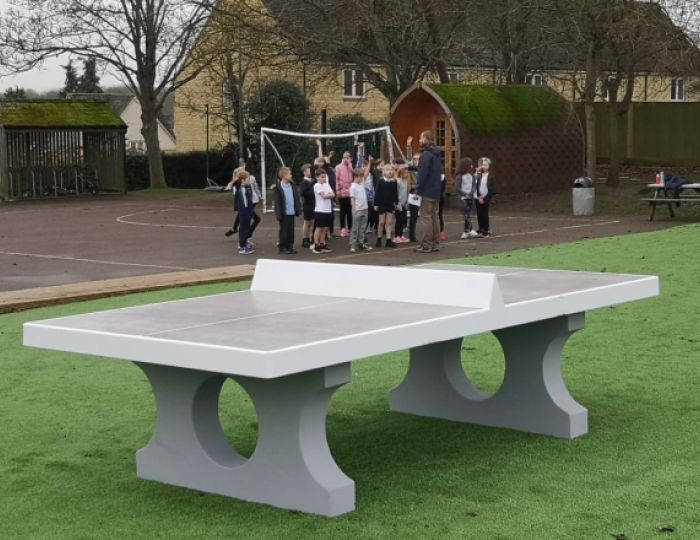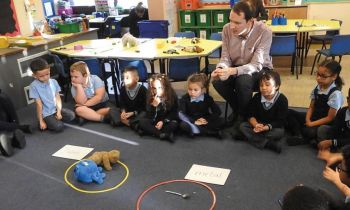Primary schools work hard to support pupils with social, emotional and mental health difficulties, helping them realise their potential whilst minimising the wider impact of behaviours that can result from disordered social and emotional development.
Informed, responsive and flexible approaches are more essential now than ever. Schools need to be a place of security and nurture, and offer an environment where children can express their emotions in a regulated manner.
Strong and responsive relationships between school adults and children – underpinned by a predictable structure to the day, and tasks that address gaps in development and learning – can ultimately sponsor success.
Relationships
Schools adopting a trauma-informed approach will deploy adults who understand the importance of relationships in supporting children to settle emotionally and physically.
Behaviour needs to be understood as a means of communication and responses calm, measured and consistent. Adults who come into contact with a pupil need to know the child and adhere to an agreed approach.
The goal is to ensure stress is minimised but also that adults are acutely aware of any warning signs and what intervention is necessary to get back on track.
When adults have a shared understanding that the behaviour of the child is an expression of a deeper need, they are more likely to be able to support the child to make a sustainable behavioural change which relies on self-regulation.
Adults deployed to work with pupils with social and emotional regulation difficulties should be able to focus on ‘the now’ and move on quickly from their own disappointments, remain patient, consistent, calm and flexible and have the confidence to employ strategies to de-escalate.
Whether children spend all or part of their day in a specialist provision or are mainly in class, adults need to work hard to build attachments and foster trust.
Language used with children with PSED difficulties needs to be clear. Instructions should be delivered in calm, simple language so that the core message is not missed.
If the next task could potentially trigger a negative response, the adult needs to manage the expectations, e.g. “We can enjoy this game even if we don’t come first”.
It is expected that children will make their own choices but sometimes circumstances mean the adult needs to instruct, e.g. rather than “Would you like to tidy up now” say “Time to tidy up”.
Behaviour management
It is important to recognise the behaviours as they occur to reinforce what is expected. Staff should agree what the principal pro-social behaviours are and consistently encourage and acknowledge them.
The recognition system can be recorded or verbal but should become so familiar to the child that they use the language independently, can explain what it means and recognise themselves when they are doing it. Throughout the day, adults should point out the following to the child so that s/he grows to believe that:
- I think before I act
- I can have a go
- I accept my mistakes
- I am considerate of others
- I bounce back
- I am positive
- I listen
- I keep my problems small
- I accept challenges
- I do not give up
- I do the right thing
- I am an independent learner
Behaviour management for pupils with PSED needs will often be individualised with risk thoughtfully planned for and recorded as part of a one-page profile or an explicit risk reduction plan.
Rules are in place to safeguard and to ensure that children can be taught well enough to learn and move on from their starting points.
Adults can support pupils to get back on track with gentle but firm reminders delivered in a neutral tone to put the appropriate course back in the child’s mind.
They need to be vigilant and be aware of where pupils are on their personal scale of regulated behaviours. To stymie inappropriate behaviours, low key responses and descriptions of reality delivered by an adult to pupils off task and on the cusp of accelerating behaviours could be any of the following:
- Tactical ignoring. Sit it out and withdraw interaction and reaction
- Swoop in and out. Give a quick instruction and leave because the expectation is that everything will be in order again from that point
- Describe what has been successful prior to this moment. “Elizabeth, I really liked the way you re-read the sentence in order to correct your mistake earlier on. Maybe that will work here too? Give it a go”
- Describe the reality. For example, “Elizabeth, you are shouting”
- Describe what the positive behaviour looks like. “Elizabeth, we put our hands up and wait to be asked. Thank you”
- Reminder of the expectation. “Elizabeth, the expectation is that we walk to the line. Thank you”
- Bring the task to close but on the adult’s terms. “Elizabeth, just finish those two questions because we need to go outside for our mile a day. Thanks”
Children need to be reminded to keep their problems small, but mistakes do occur and when they do clear, logical consequences should follow.
Thought should be given to what makes sense to the child and how it relates to the behaviour because the desired outcome is for the behaviour to be altered in the long term.
The restorative conversation
A restorative approach separates the child from the behaviour but supports an understanding of the child’s own culpability and the harm that has been caused to others.
Adults ensure when discussing an incident the child knows they are listened to. When restorative conversations become part of the fabric of provision, children understand that mistakes are expected but with shared inspection the situation can be resolved calmly.
Simply put, the approach leads to honest conversations that don’t dwell on the punitive outcome.
There may ultimately be a consequence but because the process helps the child to accept their own culpability in a structured way, a consequence becomes logical.
Adults plan the approach with questions/scripts to elicit an understanding of the incident and the child’s place in it. Careful listening, an open mind and empathy support a positive interaction.
Finally, for children with short attention spans, social stories can be used to improve understanding by presenting a short narrative in a concrete way in less time.
Cartoon strips can be used to provide a visual map through the incident and prompt answers. For young children, drawing very simple pictures on a white board to make the sequence clear with space for the adult to draw or write an alternative course of behaviour will suffice.
Structuring a restorative conversation
The restorative conversation will be scaffolded by questions to an end goal of how reparation can be made. Questions could be asked as follows:
- What happened?
- What were you thinking about at the time?
- What have your thoughts been since the incident?
- Who do you think has been affected by your actions?
- In what way were they affected?
- What do you do now to make things right?
Katrina Brown is SENDCo at Histon and Impington Park Primary School, and Leader of GROW at Cambridge Primary Education Trust




_945_573_80_int_s_c1_c_t.jpg)





